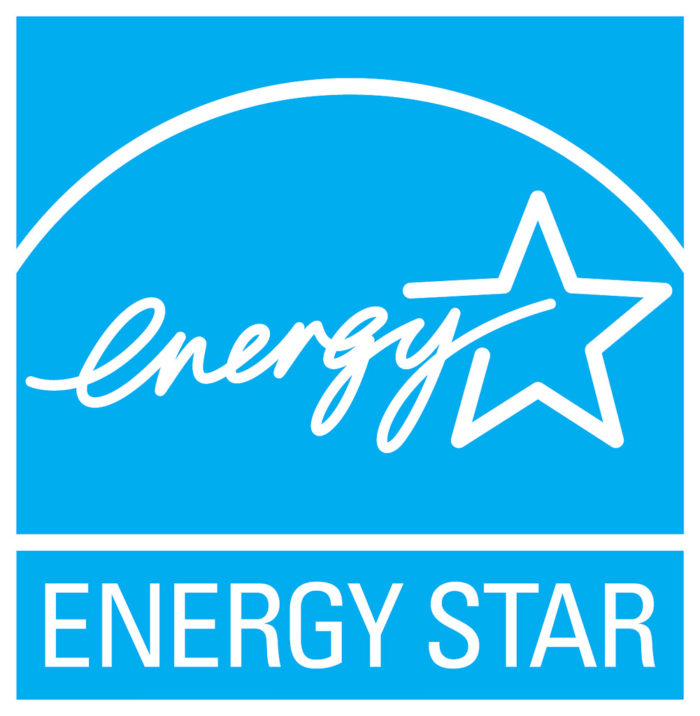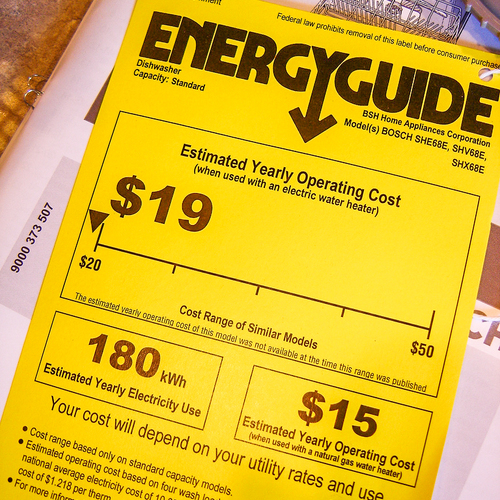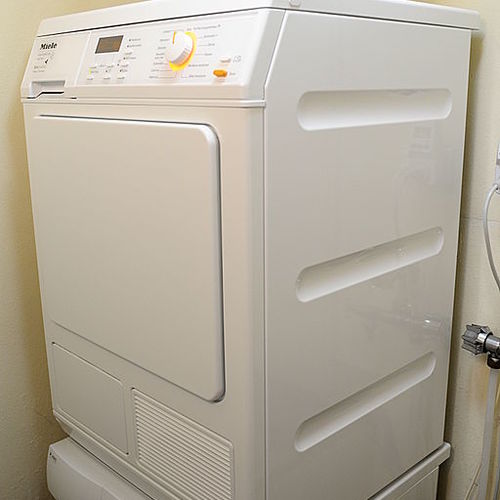
Image Credit: Environmental Protection Agency
Imagine owning a brand that’s both well-known and widely trusted by consumers and businesses all over America. Now imagine that it turns a $50 million annual investment into $30+ billion worth of annual customer utility bill savings, and has resulted in branded sales of more than 5 billion products since its inception. That’s one heck of a rate of return and a brand that any CEO would die for.
Well, that brand happens to be Energy Star, a voluntary labeling program for appliances, equipment, and buildings that is managed by the U.S. Environmental Protection Agency (EPA) and was established back in 1992. The blue and white Energy Star label makes it easy for consumers to identify energy-saving products that also help save money and protect the environment by using less energy. No wonder it has become one of the most successful public-private partnerships of all time. (The program has more than 18,000 partners, including a wide range of manufacturers, retailers, builders, and utilities.)
But here’s the shocker: this amazing program looks to be on the chopping block as part of soon-to-be-proposed budget cuts at the EPA.
How does the program work?
Energy Star is a labeling program that helps consumers and businesses select a more energy-efficient model — usually among the top 25% most efficient on the market. All the consumer needs to do is look for models that have the blue Energy Star logo, which means the manufacturer has voluntarily applied to EPA for the privilege to use the label signifying that the product meets specific energy-saving requirements. It’s that simple. A consumer doesn’t need to know what energy factor the replacement furnace should have (and whether a higher or lower number is better) or how many kilowatt hours per year a new energy-efficient clothes washer should use.
EPA establishes minimum specifications for each of the 70 product categories in its program. These range from water heaters, light bulbs, air conditioners, and computers, to office buildings and new homes. In general, EPA strives for the Energy Star label to represent the top quarter of the market in terms of a product’s energy efficiency. In other words, if there are 100 medium-sized refrigerators on the market, the 25 models that use the least amount of energy would be eligible to qualify for the label. Manufacturers whose products meet or beat the requirements can earn the Energy Star label.
To ensure that the products perform as promised and to preserve the integrity of this trusted brand, the EPA requires manufacturers to submit laboratory testing results and conducts annual “off-the-shelf” verification testing of selected products. EPA resets its specifications once the market share of Energy Star-qualified models grows to 50% or so for a particular product category, which is typically every two to three years.
The Natural Resources Defense Council (NRDC) has for years participated in the EPA proceedings where the Energy Star specifications are set. Their process is open to all stakeholders, and is very comprehensive and data-driven.
Incentives to save
Utilities and program administrators across the country invest billions of dollars each year in rebates to encourage consumers and businesses to buy Energy Star-qualified products. After all, it’s a lot cheaper and better for the environment to invest in energy efficiency than having to build new power plants.
Many leading manufacturers tweak their designs to ensure that their products meet Energy Star criteria and are eligible for the rebates. The Energy Star labeling program clearly moves markets, and as demand for the more efficient models increases, production rises and prices of the more efficient equipment come down. In fact, utilities offered consumers and businesses more than $5 billion in incentive programs in 2016 alone for rebates for products that met or exceeded Energy Star. That’s amazing leverage for the modest investment made by EPA!
A similar dynamic is in play with new homes, whereby builders that offer homes that are at least 15% more efficient than the local building energy code qualify for Energy Star certification. In 2015 alone, families living in Energy Star certified homes saved more than $625 million on their utility bills.
EPA also developed a benchmarking software tool called Energy Star Portfolio Manager, which commercial building owners use to assess their building’s energy and water use. The most efficient buildings qualify for the coveted Energy Star certification, which can increase the building’s value and help in recruiting environmentally minded tenants.
The program that really delivers
In its “Overview of 2015 Achievements,” EPA reported that the Energy Star program helped families and businesses save $430 billion on their utility bills while reducing climate change pollution by 2.7 billion metric tons of carbon dioxide since 1992. (Cutting energy consumption means also reducing the amount of fossil fuels that need to be burned to produce it.) These are massive numbers, many of which would not have occurred without the foundation laid by the Energy Star labeling program.
Manufacturers like the program, as it is voluntary and can provide them with a competitive advantage over products that do not bear the Energy Star logo. Retailers such as Home Depot, Sears, and Best Buy are Energy Star partners and utilize the aforementioned utility rebates to drive demand for the Energy Star-labeled products.
The Energy Star program has thrived under both Republican and Democratic administrations and has broad support from an amazingly diverse set of stakeholders. Year after year, the program continues to deliver amazing results, with savings that outweigh the program cost by more than 500 to 1.
Given the massive benefits and proven track record of this program, along with the support from consumers, manufacturers, home builders, building owners, retailer and utilities, it’s hard to imagine why the Trump administration or Congress would consider gutting or eliminating this program.
We need to tell them they are looking in the wrong place for cuts, and that they must not eliminate or tamper with this amazingly successful and impactful program.
Noah Horowitz is senior scientist and director of the Center for Energy Efficiency, Energy & Transportation at the Natural Resources Defense Council, where this blog was originally published on March 9.
Weekly Newsletter
Get building science and energy efficiency advice, plus special offers, in your inbox.















10 Comments
The problem is rebates
"Utilities and program administrators across the country invest billions of dollars each year in rebates to encourage consumers and businesses to buy Energy Star-qualified products."
#1 Where do these billions of dollars come form? Thin air?
#2 Much like the market for solar panels government subsidies (rebates in this case) inflate the cost and consequently distort market prices for these products.
Rebates (reply to John Clark)
The Energy Star program is not what forces utilities to offer rebates. Utilities offer rebates to comply with state regulations that require them to invest in energy efficiency when that is cheaper than investing in additional capacity. The answer to your first question is that the money comes from savings from not building and operating additional power plants.
If you believe that the benefits of the rebate programs do not outweight the negative effects (market distortions), then you should advocate for changes to the energy efficiency rules on utilities that motivate the rebate programs. Eliminating Energy Star with energy efficiency requirements in place would simply force the utilities to find some other criteria for deciding who qualifies for a rebate. Those other criteria would probably be more complicated for consumers to understand and therefore less effective at motivating demand reducing purchasing decisions.
I would agree that it is disingenuous for the Energy Star program to take full credit for all of the savings. The Energy Star program should only get credit for the incremental savings that result from making the utility rebate programs more effective than they would otherwise be.
utility basics for john clark
Monopoly utilities are regulated to receive a guaranteed rate of return, in return for a government guaranteed monopoly.
Rebates provided by the utility are, like every other expense paid by the utility, paid for by utility customers.
Levelized cost of efficiency is cheaper than the energy saved.
Reid has it right- most utilities/states offering subsidies for Energy Star appliances are in states with deregulated electricity generation markets, where the utilities are mandated to (and compensated for) buy efficiency whenever it's cheaper than the generation & grid assets needed to cover the difference in aggregate amount of power used. The amount of subsidy & compensation typically proposed by the utility and reviewed by utility regulators during rate adjustment cases. It's only approved if/when it's a net win for the ratepayers, and not overly generous to the utility (in theory, anyway, but usually true in practice as well.)
L A Z A R D ' S L E V E L I Z E D C O S T O F E N E R G Y A N A L Y S I S — V E R S I O N 9 . 0
in November 2015 estimated the cost of efficiency between 0-$50/mwh (0-5 cents/kwh). which was only challenged by the cheapest of wind & solar options.
https://www.lazard.com/media/2390/lazards-levelized-cost-of-energy-analysis-90.pdf
The amount a utility would have to subsidize an Energy Star appliance wouldn't need to cover the entire cost of the efficiency difference, make it even cheaper for the utility.
L A Z A R D ' S L E V E L I Z E D C O S T O F E N E R G Y A N A L Y S I S — V E R S I O N 10. 0 from December 2016 did not include the LCOE of efficiency, but some combined cycle gas is able to compete directly against the very highest-cost end of efficiency, assuming the efficiency costs were comparable to 2015
https://www.lazard.com/media/438038/levelized-cost-of-energy-v100.pdf
Bottom line, except in the rarest of cases (I'm not aware of any such case) where the utility regulators were completely asleep at the switch on this one, nobody pays for the Energy Star subsidies offered by utilities. Other ratepayers save far more money in foregone rate hikes than is paid out in subsidy, even when burdened by the additional profit to the utility for those programs.
With utilities it's a bit disingenuous to talk about market price distortions, even when it has knock-on price effects not directly in the utility space. Utility markets are a complete artifice constructed and amended by regulators, and don't really have much to do with the "free market". This is true to a greater or lesser degree for all energy markets in the US, where the cumulative market effects of subsidies in various forms for all sorts of energy products abound, from cheap/free extraction of fossil resources on public lands, to the oil depletion allowance, to nuclear power development (and liability insurance), to solar technology development & deployment etc. Fracking technology development was subsidized by the US taxpayer, and all sorts of oil & gas distribution infrastructure is subsidized too. So, sure, PV deployment is currently being subsidized in the tax code, and in some locations by utility regulators, and it DOES make it more expensive than in an unsubsidized market, but the major federal subsidies for both wind & solar have a legislated calendar timeline over which those subsidies are reduced, or go away completely.
But local subsidies for Energy Star are nowhere near as wide spread, and have a far lower impact on the market price for those products.
Monthly energy-efficiency charge on electric bills
In many states, residential electricity bills include a energy-efficiency charge. This charge is established by state regulators. A few dollars a month are collected from each rate-payer to fund energy-efficiency programs in the state. If these programs are well run, they yield energy savings that exceed the value of the investment.
@Dana. You're correct that the energy markets are themselves
highly regulated. Energy Star is an attempt to regulate for the regulation..no?. It is the only logical conclusion. The broken pricing system for water might be another example and overly regulated system. Las Vegas wouldn't exist and other cities out west would be significantly smaller under a market driven pricing system for water.
My own limited research with regards to Energy Star appliances revolves around the poor reliability of the venerable front loading clothes washer and newer dishwashers. Sure these appliances save energy and resources (i.e. water), but they're generally impossible (literally or financially) to repair and are typically replaced at sometimes half the interval of the "old style" less efficient models.
I would like Energy Star to stay
If for nothing else, it gives the average consumer a quick and dirty assurance they are selecting an energy efficient product and gives them more time comparing prices and features, the things they are most concerned with.
Even after Energy Star, manufacturers will continue to produce and improve on energy efficient products, as there is an increasing demand for it. Consumers will just have to become more proactive in comparing energy use.
Keep Energy Star and Labs
As a consumer, I very much appreciate the Energy Star Program and the useful information it provides. This allows me to weed out the inefficient products and thus save money, energy, and water over time. It's not perfect, but what is? Some of the underlying procedures for rating appliances need to be updated to better reflect actual use and/or the range of use (heat pump, HSPF, region 4 standard). Overall, it's much better than having to sift through manufacturers' data hidden on forms or even stickers on the product to find/calculate energy use. It also raises the bar for all who compete.
The national energy labs do great research in science and technology related to energy efficiency and improvement of products that we use. It's a wise long-term investment for our country.
Rebates for appliances, and the likely reduction in energy and water use, work best with public utilities and maybe fully deregulated utilities where there are no conflicts of interest. They can be problematic in some poorly "regulated" monopoly corporate utility locations where ratepayers may get a rebate, but then see higher rates in the future. Here, the utility is allowed to count the kWhs or therms saved every year, for the life of the product, and then bill all ratepayers to make up the difference, instead of just reducing their variable costs (dividends, overhead, etc.). Many ratepayers are unaware of this provision and it isn't disclosed on the appliance rebate form or through the energy audit sign-up procedure. Call this willful ignorance, if you like. Large industrial customers, who pay people to count kWhs, weren't ignorant about the program and got the crony state pols. to write legislation allowing them to opt out!
This scenario assumes no increase in power demand or total energy use in the regulated area, which is actually the case in some stagnant or even declining parts of the USA. Our private electric utility is seeing flat to falling demand, year over year, due to energy conservation by residential and corporate customers with minimal growth in the area. This could quickly change with higher adoption of EVs.
I'm not against the idea of appliance rebates or subsidized energy conservation education, but I think we need greater transparency so everyone understands how it works.
Energy Star is not a regulation (@ John Clark)
"Energy Star is an attempt to regulate for the regulation..no?"
No. Energy Star is not a regulation.. Partisipation by vendors & buyers are completely voluntary. Energy Star is only a measuring stick for efficiency with a line on it. Above the line the vendor is allowed to apply the label, which they can choose to become part of their marking. The line changes year on year as technologies change, but there are no regulations or mandates.
While ARE regulations mandating minimum efficiencies for some types of products, those regulations have absolutely nothing to do with Energy Star, even if Energy Star also covers the same type of product. eg: There is a federally mandated minimum EF tested efficiency for water heaters sold in the US, and there are also Energy Star minimum EF ratings for water heaters, but there is no connection between the regulators setting the absolute minimum and those setting the Energy Star minimum.
Appliance quality and reliability issues are completely orthogonal to Energy Star- there are both really good and really crappy versions of Energy Star appliances from a reliability point of view, but it's often difficult to sort that out prior to purchase.
privatize Energy Star
Why couldn't Energy Star continue as a private entity? If it is valuable to consumers then it should be able to survive on it's own without any government assistance. UL, LEED, Passive House, Good Housekeeping, and many other private standard companies do quite well without any government association. Energy Star should be able to do the same.
Log in or create an account to post a comment.
Sign up Log in